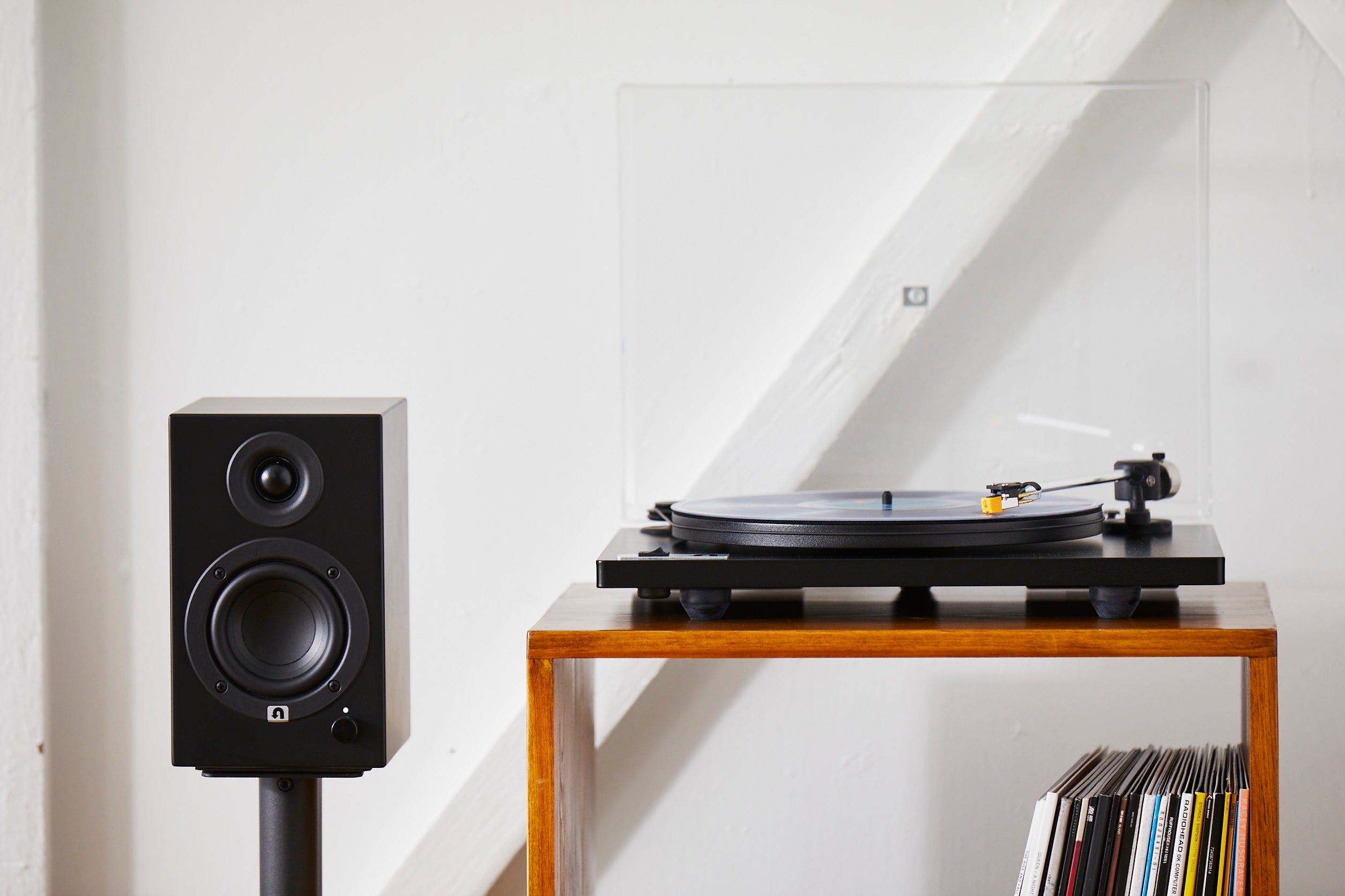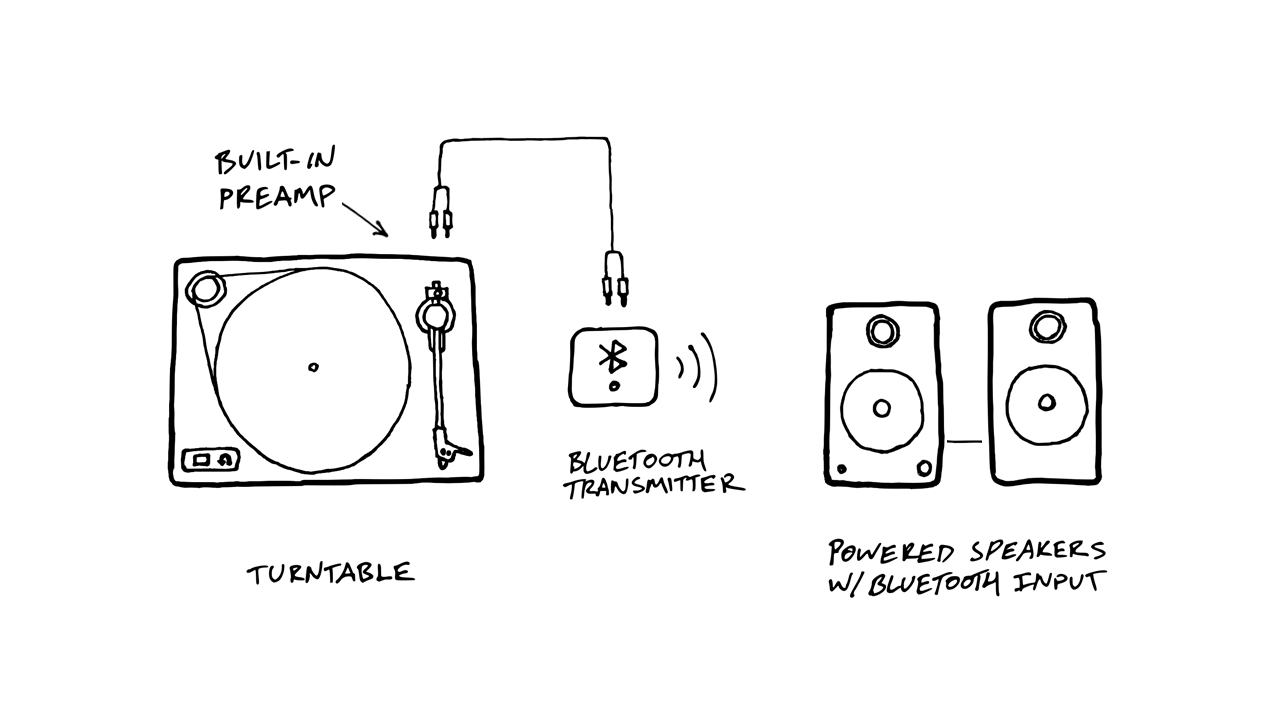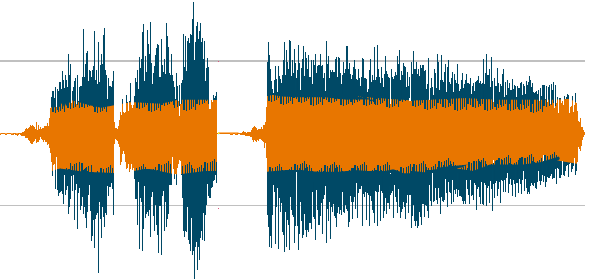
Connecting Your Turntable to Bluetooth
Let’s get this out of the way: if you want the best possible sound from your turntable, Bluetooth might not be your best option. Instead, you may want to go with a more traditional stereo system - one that transmits your music via cables exclusively. This keeps your signal path totally analog. Anything wireless requires compressing the audio, which can lead to a loss of musical detail (plus you risk adding unwanted noise to your signal). For a list of our recommended analog stereo options, check out our guide.
But if you want to hear your records out on your porch, or you absolutely hate wires, or maybe you just have a soft spot for tech honoring long dead Danish kings, here’s the rundown on connecting your turntable to Bluetooth.
Key points
-
Connecting your turntable via Bluetooth requires a phono preamp, a Bluetooth transmitter, and powered speakers (or an amp) with a Bluetooth input or receiver.
-
Bluetooth can sound good, but you might lose out on some musical detail and accuracy. The culprit: digitized and compressed signals.
-
Bluetooth isn't the only way to listen to your turntable without wires. Depending on your budget and needs, you may want to consider a higher fidelity wireless system such as Sonos.
Why Bluetooth?
Bluetooth is the most popular way to listen to your music wirelessly. Before we talk about turntables, let’s get into what Bluetooth has going for it in general.
-
Portable: Play your music anywhere you want to listen. As long as your Bluetooth transmitter and receiver are within range of each other, you’ll hear your music.
-
Universal: Bluetooth is standardized across devices and works natively with your tech regardless of what brands you’re faithful to. Any Bluetooth transmitter will work with any Bluetooth speaker.
-
Easy setup: Getting everything up and running is pretty simple - just pair an audio source to a Bluetooth receiver and press play. No need to add anything to your network or download any apps.
-
Reliable(ish): Bluetooth works independently from your WiFi network. This means it won't get choppy while your roommate binges Netflix in 4K or drop the signal when your network goes down for no reason. However, Bluetooth does have a few quirks of its own, which we'll get into shortly.
How do I connect my turntable to Bluetooth?

To transmit your turntable’s signal via Bluetooth, all you need is a phono preamp and a Bluetooth transmitter. If you have a built-in preamp on your turntable, then you just connect the transmitter to your turntable’s RCA output. If you have an external preamp, connect the transmitter to the phono output on your preamp. Once your transmitter is connected, you can pair your turntable with any Bluetooth-connected speaker or amp.
Choosing a transmitter with the right codec
There are many transmitters available (just search “Bluetooth transmitter” on Amazon and you'll see plenty of options). When choosing a transmitter for your turntable, make sure you pay attention to its codec.
When the audio signal enters the transmitter, the audio is turned into something the receiver can read and reproduce. The codec is what determines how this information is packaged. When possible, we recommend using transmitters with an aptX codec. This is an efficient codec capable of packaging and preserving more information than others.
No matter which codec you choose, make sure your transmitter and receiver codec match or else you could get stuck with the default SBC (sub-band coding). SBC should work fine, but isn't great from a sound quality perspective.
The case against Bluetooth
Bluetooth was originally designed for headsets, not high fidelity audio. Getting from vinyl to a Bluetooth speaker means taking the entirety of a signal normally transmitted by speaker wires then digitizing and compressing it. This changes the nature of the sound and loses a lot of the dynamic range stored in a physical record. For visual learners, this is the difference between analog and wireless music:

Orange = Wireless/Compressed Audio Amplitude, Blue = Analog/Uncompressed Audio Amplitude; Ghostly Beard
If you want to hear it for yourself, PhD student Ryan Maguire actually went through the trouble of hunting down what’s lost in compressed music and turning it into “ghost” tracks. Listen to his comparison of the original, compressed, and ghost versions of the first verse of Tom’s Diner.
By the time your music reaches a speaker, those digital signals have been filtered back into a smooth analog wave but the compression tends to steer a lot of audiophiles away. For these reasons, we generally recommend using good old-fashioned RCA cables, not Bluetooth, if you are looking to maximize sound quality.
Alternatives to Bluetooth
Despite the convenience of Bluetooth, it’s not the ideal way to listen to your turntable. We like the hybrid option – having a traditional wired turntable connection in your main listening area and adding a Bluetooth transmitter for when you take your listening to the kitchen, porch, or any other in-range location.
When it comes to audio quality, WiFi-based systems like Sonos are superior. However, these systems tend to be a lot more expensive and are always proprietary, which will limit what equipment you can bring into your sound system.
Bluetooth speakers can be an affordable starting point or a bonus feature you add later on. There are lots of ways to get creative with any budget. If you're looking for speakers that have both analog and Bluetooth AptX inputs, check out these Audioengine powered speakers.
Written by Maya Detwiller, U-Turn product engineer.